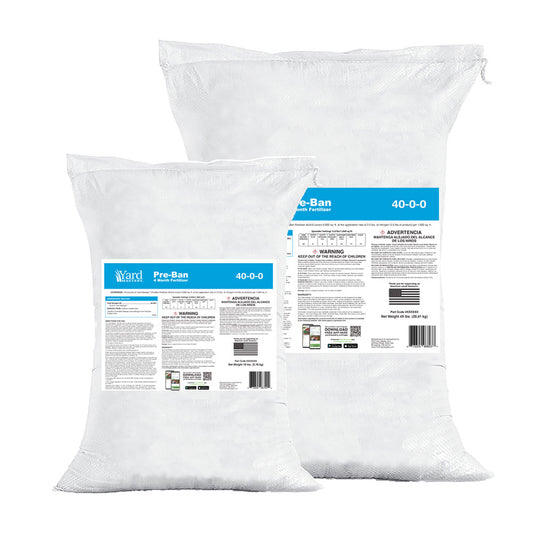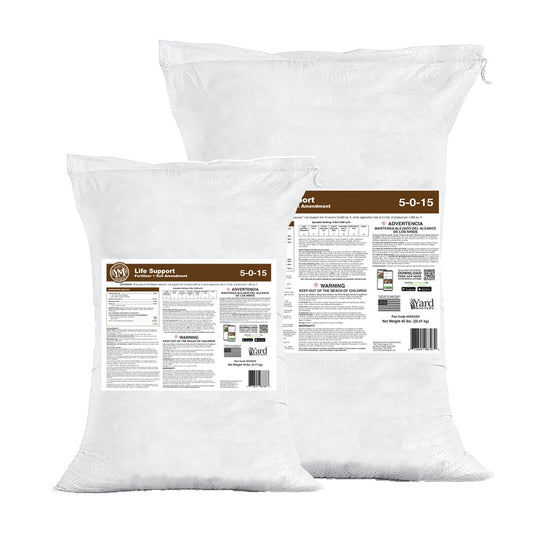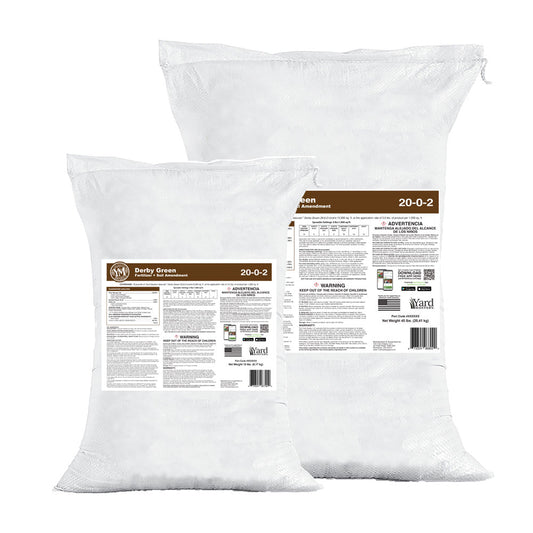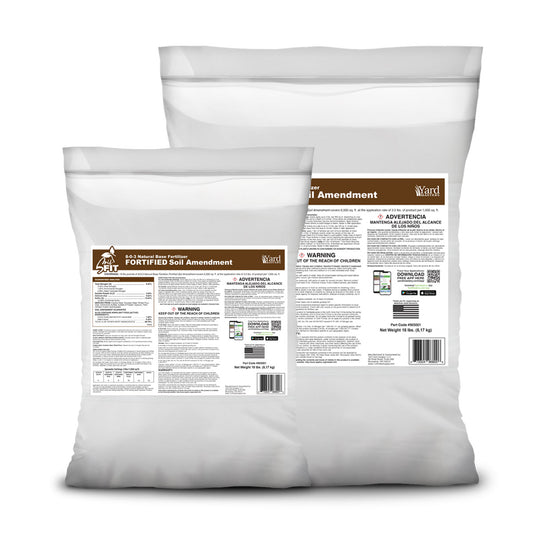What’s up ya’ll, hope you had a wonderful Father's Day weekend! Here is a video I did on “Milorganite Shortage?”
Let’s just jump into it:
Pre-Emergent Reminder
I know we hammered home the importance of pre-emergent herbicides very early in the year. Many of you listened and got that early spring pre-emergent application of prodiamine down and are good to go.
However, if you’ve had a major issue with crabgrass in the past, or you have not put any pre-emergent down yet at all, then right now is the time to get your application of dithiopyr down. It may not get everything, but it will still be much better than nothing.

To review - pre-emergent herbicides mostly prevent weedy grasses from entering the lawn. They do this by disrupting growth at the cellular level when plants are very young. If you don’t get to them before they emerge (hence the term “pre-emergent” herbicide) then it will be too late to prevent and you’ll have to switch to a more difficult post-emergent strategy using a selective herbicide. Here is a link to my Beginners Guide To Weed Control that talks about that strategy.
Now, if we're honest here, for cool-season lawns, our primary target in lawns for pre-emergents is crabgrass. Sure, these products can stop foxtail and barnyardgrass too and even poa annua (which we will talk about here more) but essentially we are concerned with crabgrass.
For cool-season lawns like Bluegrass, Fescue and ryegrass, go ahead and get that dithiopyr down here this weekend coming up (they ship pretty fast) and water it in. This is your best bet heading into later summer.
For warm season lawns like Zoysia, Bermuda, Centipede, Bahia and St Augustine… we have other options to stop nutsedge, doveweed, and signalgrass that invade our lawns heavily during summer growth periods. Your best bet at this time, if you have issues with these, is Pennant Magnum.
Expensive? Not really, the use rate is so low at 28 ml/gallon (1 gallon covers 1,000 sq ft), that jug will cover 135,178 sq feet. If you have a 10,000 sq ft lawn, that is 13.5 applications you can get from it! You only need one of these per year so feel free to help out your neighbors too - especially if they have nutsedge/kyllinga or doveweed that will surely spread to your lawn.:
Fun Math:
- 1 oz = 29.57 ml
- Pennant Magnum comes in a 128 oz jug = 3,785 ml
- 3,785 / 28 (our mix rate per 1000 SF) = 135,178 sq ft coverage total
- Jug cost: $225
- Cost per 1,000 sq ft: $225/28 = $8.05
If you have warm season turf and don’t get issues with Sedges, Doveweed or signalgrass, then just use Dithiopyr for your second application (or first here in June).
Note: Pennant Magnum stops crabgrass too in case you were wondering.
ALL pre-emergents must be watered in with ½” rain or irrigation.
Am I Too Late for Crabgrass?
Almost. I recommend dithiopyr for this later June application because it has some efficacy against crabgrass that has emerged up to the first tiller stage. With the VERY late spring we had across most of the midwest and east, crabgrass may be a little behind making late June still a good option for a second or even your first crabgrass preventative for the year.
In Summary: If you have issues with, or are concerned about, crabgrass, Throw’er Down and prevent what you can - hope for the best!
However, if some crabgrass is already breaking through around edges near heat zones or sidewalks, then your very best bet to control it is:
- Cool Season Lawns - Quinclorac (post-emergent spot spray)
- Warm Season Lawns - Dismiss (post-emergent spot spray)
Just in case you missed it, here is a link to the entire pre-emergent guide.
Quick Thought: Fall Seeding - If you apply dithiopyr here in later June, we are going to run into the fall seeding time as far as residual goes (I’m talking cool season lawns here).
I typically recommend most of you in the midwest, north and northeast to do your fall aeration and overseeding in early September, even late August if you can pull plugs and are irrigated. This means that applying your dithiopyr with a 12-14 week residual is putting you clearly into September and that is “no bueno” for new grass seed. Fear not though, a good double pass aeration will break up that barrier enough to be fine with your fresh overseeding.
Additionally, with all the watering you will need to do after (seed needs water daily to grow) that will wash out any remaining dithiopyr, but ONLY if you have first aerated. This is what aeration is best for: creating a nice seed bed in an existing lawn for fall overseeding.
Warm Season Fall Seeding?
Fall seeding applies mainly to you cool season folks as I do not recommend fall seeding of warm-season grass types. Why?
- St Augustinegrass seed doesn’t exist
- Bermuda seed needs a full season to establish - several months and maximum sunlight. Shorter days in fall don’t work well for Bermuda seedings, even though I made it work once on Frankenlawn.
- Zoysia seed - super slow. I don’t recommend you try it.
- And Centipede I have no clue but still, it needs more time than just the fall.
- Bahia - go for it, thrower down lol
Quick Thought 2: Poa Annua
Annual Bluegrass or poa annua is a winter annual. This means it germinates in fall, chills out over winter, grows in spring and shows its head in later spring and summer. When temps get hotter in summer, it drops seeds and dies and the process starts all over again in fall.
To prevent it, you need a strong pre-emergent game that differs from the norm. In this case, you need an application of Dithiopyr or Prodiamine in early September, and if you have it really bad, a follow up again in later October. This means absolutely no aeration and no overseeding of good turfgrass. You will have to let that go.

One more for you warm season grass friends: Sand Spurs, Sand Bur
"Hey Allyn,
First I want to say I love your channel and the content you give us, your viewers. I know you probably get hundreds of emails about random lawn questions but this is a particularly nasty problem. I have a new neighbor and he’s inherited 1.5 acres of maybe 30-40% Bermuda and the rest consists of broadleaf weeds but the huge concern are the stickers (sand burrs)!!! I live in Texas and we’re in the middle of this stuff’s prime growing season. My neighbor really wants to start treating his new lawn and getting rid of the stickers because we’re both big outdoor type families and our properties kinda merge together (our kids play outside like they own both...). I want to know how you’d begin to approach this and possibly for long-term treatment. I appreciate all you do and hope to hear from you soon. Thanks.
Kyle"

--------------------------
Hey Bro,
yes, I despise sand spurs too!
When I was a kid, growing up in a coastal area, all the lawns had them and they ruined play time in the sprinklers for sure.
You need a two-pronged attack with them:
1) Pennant Magnum pre-emergent. Seems expensive but the use rate is low and you guys can share. If he is on 1.5 acres, that is about 70,000 sq ft. Once jug covers 135,000 and you only need one app per year so you can both share.
This needs to go down in springtime. Whenever you have to start mowing the lawn, that is when you should apply it. It will also work for crabgrass, signalgrass, doveweed, and nutsedge (suppression) so it's a good all-around pre-emergent. This product won't completely prevent all sand bur, but it will get a good amount and over time the pressure should lessen anyway.
2) Celsius - this is what you want to spray on the ones that are already up. It's a slower acting, professional weed control that is easy on the Bermuda but will kill the sandbur and pretty much every other weed in your lawn. However, it has a heat restriction of 85 so spray in the evening when temps are below that. Only spot spray unless the problem is really bad.
You can add a surfactant if you want, or 1oz baby shampoo per gallon. This will make it stick and work better.
In fact, that combination right there will take care of 95% of every weed problem you will ever see in your lawn, not just sandbur.
There you go guys, another long email but hopefully, at least one of my tips here penetrated and you learned something.
I’ll see you in the lawn!
AL









